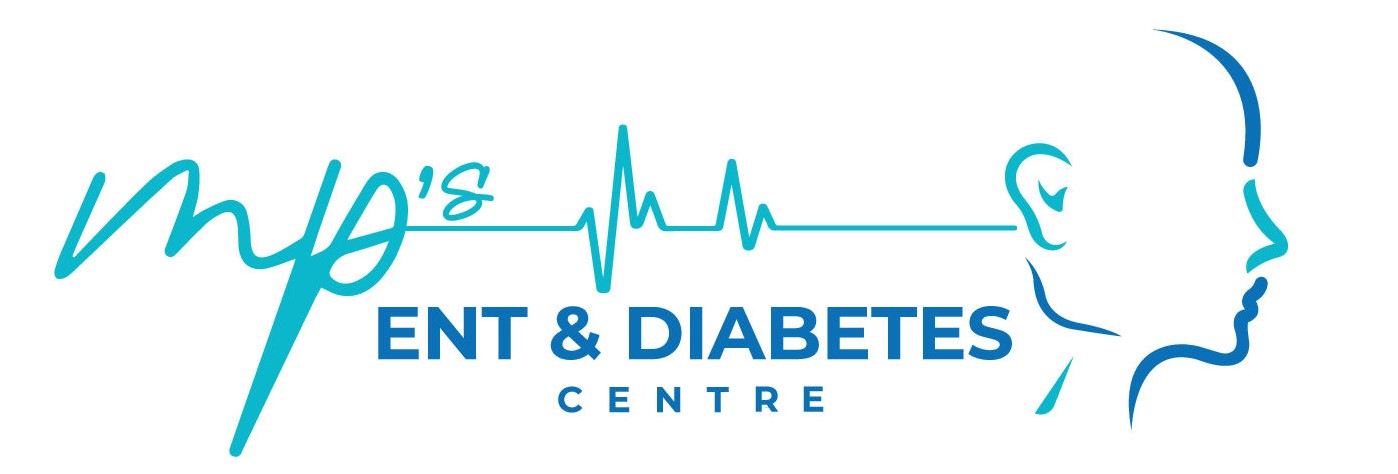Services > Perforated Eardrum Repair (Tympanoplasty)
Perforated Eardrum Repair (Tympanoplasty)
🔎 1. What is a Perforated Eardrum?
A perforated eardrum, also known as a tympanic membrane perforation, is a tear or hole in the thin tissue that separates the ear canal from the middle ear.
- It can lead to hearing loss and make the ear more vulnerable to infections.
- If the perforation doesn’t heal on its own, tympanoplasty is performed to repair it.
🔥 2. Causes of a Perforated Eardrum
- Infections:
- Chronic or acute otitis media (middle ear infection) can cause the eardrum to rupture due to fluid buildup and pressure.
- Trauma:
- Blows to the ear, head injuries, or inserting objects (e.g., cotton swabs) into the ear.
- Sudden pressure changes:
- Barotrauma from scuba diving, air travel, or explosions.
- Loud noises (acoustic trauma):
- Exposure to sudden, loud sounds (e.g., explosions or gunshots).
- Ear surgery complications:
- From previous ear procedures or infections.
💡 3. Symptoms of a Perforated Eardrum
- Ear pain (sudden or sharp)
- Hearing loss or muffled hearing
- Tinnitus (ringing or buzzing sound)
- Fluid or pus drainage from the ear
- Dizziness or vertigo (in some cases)
- Recurrent ear infections
🔥 4. Diagnosis & Evaluation
A healthcare provider will:
- Examine the ear with an otoscope:
- To check for a visible hole, redness, or fluid.
- Tympanometry:
- Measures eardrum movement to detect perforation.
- Audiometry (hearing test):
- Evaluates the degree of hearing loss.
- CT scan or MRI (in complex cases):
- To assess middle ear damage or rule out other conditions.
⚡ 5. What is Tympanoplasty?
Tympanoplasty is a surgical procedure to repair a perforated eardrum by closing the hole with a tissue graft.
- It aims to restore hearing, prevent infections, and improve quality of life.
🔥 6. Types of Tympanoplasty Procedures
- Type I Tympanoplasty (Myringoplasty):
- Repairs the eardrum only (no ossicle damage).
- Type II Tympanoplasty:
- Repairs both the eardrum and middle ear bones.
- Type III Tympanoplasty:
- The eardrum is placed directly over the stapes bone (if malleus and incus are damaged).
- Type IV Tympanoplasty:
- For more complex cases with severe middle ear damage.
- Type V Tympanoplasty:
- For cases with severe Eustachian tube dysfunction or chronic ear issues.
⚡ 7. The Tympanoplasty Procedure: Step-by-Step
- Preparation:
- Fasting: You may need to avoid eating or drinking for 6–8 hours before surgery.
- Medications: Certain medications may need to be stopped (e.g., blood thinners).
- Anesthesia:
- Performed under local or general anesthesia.
- Incision & Access:
- The surgeon may access the eardrum through:
- The ear canal (endaural approach).
- Behind the ear (postauricular incision) for better visibility.
- The surgeon may access the eardrum through:
- Graft Placement:
- A small tissue graft (usually from the patient’s own tissue—temporalis fascia or tragal cartilage) is placed over the perforation.
- In some cases, synthetic materials may be used.
- Securing the Graft:
- The graft is secured with absorbable packing material.
- Closing the incision:
- The external incision is closed with dissolvable stitches (if made).
🔥 8. Recovery After Tympanoplasty
- Hospital stay:
- Usually outpatient surgery, but some cases may require an overnight stay.
- Healing time:
- Full healing takes about 6–8 weeks, but improvements in hearing may take several months.
- Pain management:
- Use prescribed pain relievers or over-the-counter medications.
- Activity restrictions:
- Avoid blowing your nose forcefully for 2–4 weeks.
- No swimming or water exposure in the ear.
- Avoid heavy lifting or straining for 2 weeks.
- Follow-up visits:
- Your doctor will remove the ear packing and check the healing process.
- Hearing tests may be performed during follow-up appointments.
💡 9. Risks & Potential Complications
Although tympanoplasty is generally safe, complications can occur:
- Infection: Rare, but antibiotics may be required.
- Graft failure: The graft may not attach properly, leading to re-perforation.
- Hearing loss: Though uncommon, there may be a slight reduction in hearing.
- Tinnitus or dizziness: Temporary or, rarely, permanent.
- Scarring: May cause minor hearing issues in some cases.
✅ 10. Benefits of Tympanoplasty
- Improved hearing: Reduces hearing loss caused by the perforation.
- Prevents chronic infections: Seals the hole and reduces the risk of infections.
- Enhances quality of life: Resolves issues like tinnitus and ear pain.
- Improved appearance: In some cases, it corrects cosmetic deformities.
🔥 11. Post-Surgical Care Tips
- Protect your ears:
- Avoid getting water in your ears for at least 4–6 weeks.
- Use a cotton ball with petroleum jelly when showering.
- Avoid air pressure changes:
- No flying or diving for at least 6 weeks.
- Avoid blowing your nose forcefully.
- Nasal care:
- Use saline nasal spray if your doctor recommends it.
- Rest and recovery:
- Avoid strenuous activities until your doctor clears you.
🔎 12. When to Seek Medical Attention
Contact your doctor if you experience:
- Increased ear pain or swelling
- Heavy or persistent drainage from the ear
- Hearing loss that worsens
- Dizziness or balance issues
- Fever or signs of infection
🌿 13. Prevention Tips for Future Perforations
- Protect your ears from trauma:
- Use earplugs during swimming or loud activities.
- Avoid inserting objects into your ears:
- Don’t use cotton swabs or sharp objects.
- Treat ear infections promptly:
- Early treatment prevents pressure buildup that could rupture the eardrum.
- Manage allergies or sinus issues:
- Reduces Eustachian tube dysfunction and ear pressure.
